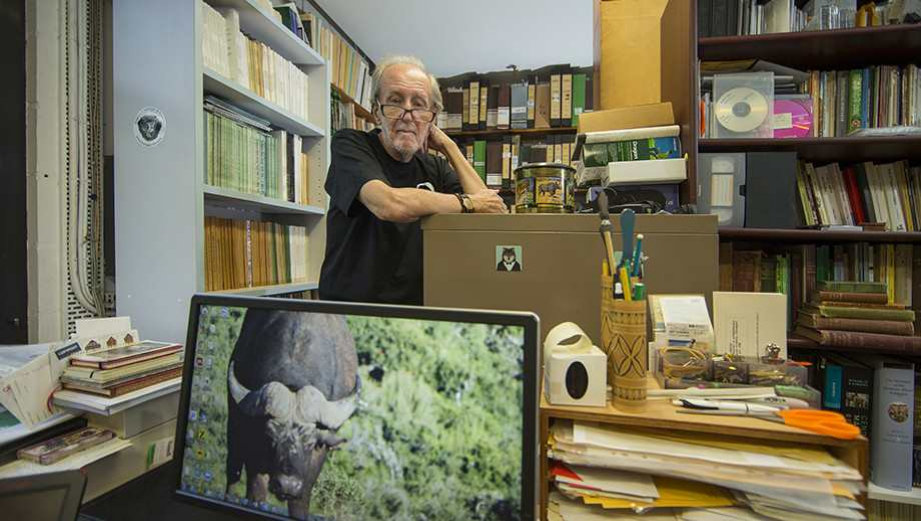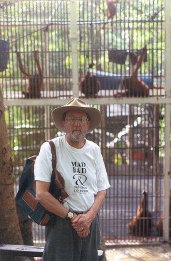The Naked Yowie Project

Contact

Home
Colin Peter Groves (24 June 1942 30 November 2017)
Professor of Biological Anthropology, Australian National University, Canberra
Cryptozoologist & Skeptic

Groves on the Yowie:
A better known name for the hairy wild man today is the Yowie. For this term, however, the Australian National Dictionary and Joyner (1977) fail to find any great antiquity; Joyner quotes the Sun-Herald for December, 1975, and the Australian National Dictionary The Bulletin for May of the same year. (This would be about the time that the city fathers of Queanbeyan offered appreciable sum of money for the Yowie's apprehension a sum which seems never to have been claimed.)
The Australian National Dictionary does, however, draw attention to the following passage in Kevin Gilbert's Living Black (1977: 241): "We had the legendary bunyip, the giant water snake, the little people and the hairy youree the huge shaggy man-like creature that the whites call 'yowie.'" If Gilbert (here referring to his own experience) is truly speaking of the myths of his own people, the Wiradjuri of southern New South Wales west of the ranges, rather than generalizing about Aboriginal mythology, then this would seem at the same time to suggest an origin for yowie, and to place the concept firmly within the mythological sphere...
...
The evidence for the existence of an Australian wild man a Yowie is extremely poor. Joyner ends his 1984 paper with just this conclusion: unknown species there may be, but that such a species is a hominoid (or hominid) is in no way required by the evidence. Bayanov (1985) objects, citing some reports from Joyner's own 1977 and 1980 monographs, combining them together to create a hairy wild man. One simply cannot do this. As on a previous occasion, I refer to Heuvelmans' (1958) Nandi Bear chapter, where he shows that, if one investigates the existence of "an" unknown animal, and lumps together all the sightings of "it," one is very likely to emerge with precisely that: an unknown animal. But if one teases the reports apart, recognizing that people often do not know their local fauna very well, and may be associating anything they do not recognize with the reputed animal, then the results may be quite different, and no truly unknown animal need be postulated.
New Australian mammal species continue to be described year by year. This is extremely exciting for the mammalogist, but there are, so far, few cryptozoological "events" one, coincidentally, concerns a wombat (Tisdale 1986). As megafaunal survival has now been shown at such a recent date (Fethney, Horton, and Wright 1986), it is, I suppose, not completely out of the question that one or more giant marsupials hung on until the nineteenth century. I am of the same opinion as Joyner (1984): if there is a genuinely cryptozoological basis for any of the wild man (Yowie) stories, a wombat is quite certainly what it is.
Noise, Signal, and Evidence (Response to Bayanov and Joyner) (1987)
On type I and type II errors in cryptozoology; or, was Proteus
a yahoo? (1988)
Dr Colin Groves, a reader in anthropology at the Australian National University and yesterday's speaker on yetis, admitted he believed
in the 1960s there was a chance that Bigfoot existed.
He started to question it when one report revealed that one paw was a snow leopard's,
not a yeti's.
"I guess I wanted them to exist. It's an exciting idea - these large creatures more closely related to us than chimps
- and they'd been hiding for so long," Dr Groves said.
"Many people in Russia still believe in the yeti, I don't know why. They now
look in the Tien Shan Mountains in the Soviet Union and China," he said. "There are still many yeti enthusiasts in the Western world.
Some scientists still look."
--
SEE HOW EASY IT IS TO BEND THE TRUTH? Sydney Morning Herald (1991)
The world is a very big place, so could there be creatures lurking in the bush waiting to be discovered?
Not according to Professor
Colin Groves from the Australian National University, who is convinced that each reported sighting even in colonial days was a
case of mistaken identity.
His research into crytozoology, the study of hidden animals, has failed to uncover any evidence that the
creatures exist.
"Very often people see something, misidentify it, and put it down to being some other creature," Professor Groves
said.
"People see a feral black cat and get a wrong impression of its size and think its a black panther.
"The myth of the yowie
has grown from the first white person who saw something and were mistaken about what they were seeing.
"Any odd disturbance in the
bush is usually put down to the yowie."
--
Yowies, ghosts and UFOS at Maitland Gaol for Paracon 2014,
The Herald (2014)
-- Links needed




"Yowie Researchers" show their respect:
Having more than an "inkling" about what is going on, Groves was on the ball...
23.01.2018






